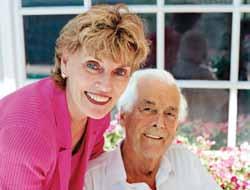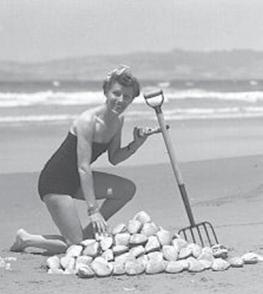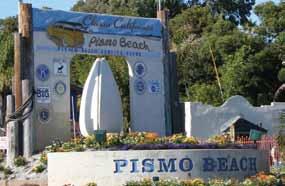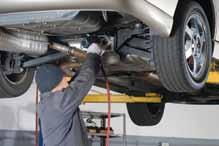
3 minute read
No Place Like Home
Get Back to the Business of Running Your Business Business Liability Workers’ Compensation Commercial Auto Insurance Employee Benefits Life Insurance
Call today and let us begin assisting you with all of your commercial insurance needs. (805) 783-7130 Visit us online at www.rlassoc.com 1363 Marsh Street, Suite A San Luis Obispo, CA 93401
TRUSTED IN-HOME CARE Respect & Care At Home


• Personal Care • Compatibility Guaranteed • Transportation • Affordable Rates • Meal Preparation • State & Federal Compliant • Professionally Managed 4 to 24 Hour In-Home Care
805.781.8156 888.439.8800

NO PLACE LIKE HOME Pismo Clam
BY JEANETTE TROMPETER, KSBY NEWS

There may not be a lot of clams around anymore, but there’s good reason to learn a bit about the little critter because the Pismo clam is yet another reason there’s No Place Like Home.
The clam that was once plentiful along the Pismo shore helped put Pismo on the map. The little mollusk was abundant here long before 1957 when Bugs Bunny set his sights on Pismo Beach “and all the clams we can eat” as seen in Ali Baba Bunny. And in 1967 Dragnet put the community in the spotlight again connecting it to this seaside delicacy, “The clams, man. The clams.”
Pismo’s connection to the clam is much older, though, than the city itself. The area was all Chumash Native American ground at one time, and the little mollusk was used not only as food, but currency as well. Later, the diaries of the rancheros also talk about going clamming and enjoying an abundance of clams here before the turn of the century.
“But then people were taking them by the thousands,” says Bob Pringle, owner of Pismo Bob’s Hardware. “You gotta remember when this was on a high, it was out of control. People were taking 1,000-1,500 at a time.”
The conception of this hoppin’ seaside community becoming a township started in 1842. That’s when a man named Jose Ortega received a Spanish land grant. By 1850, Juan Miguel Price, or “Uncle Johnny Price” purchased 8,000 acres of the Pismo Ranch that would become the City of Pismo Beach. The first effort to control the harvesting of clams came in 1915, when county supervisors put a limit of 12-13 inches in size. And they limited daily hauls to 75! bountiful harvests from the sea. “It was truly the clam capital of the world,” Pringle points out.
By World War II, locals began to see the Pismo Clam was in danger, and clamming was prohibited in most areas. It did, however, continue to be harvested commercially by three different companies for years.
In 1949 when clamming was re-opened to the general public, the people poured in. It’s estimated that 25,000 people would come to dig a day, and they didn’t leave empty handed. Newspapers talk of 750 tons of clams being hauled out daily. But those clams became scarce again by the 50’s and 60’s and virtually non-existent by the 80’s.
The truth is, there aren’t many clams on this beach anymore. But it’s still legal to try to get some. And whether they’re here or not, the clam will likely remain the mascot of Pismo Beach.
Pringle says tourists still associate Pismo Beach as a great place to get your feet wet and give clamming a try. “As long as they have a license, you can take them if they are 4 1/2 inches or larger. Still we sell clam forks and clam gauges, but they’re not as prevalent.”
And even if you come up empty, it’s not a bad place to spend a day digging for Pismo Beach treasure. “The kids know because of the parents and grandparents, everyone wants to come back to Pismo Beach because Pismo Beach is like Mayberry and everyone remembers what it used to be, you know?” says Pringle.
No matter the case, the Pismo Clam is still more proof There’s No Place Like Home. Jeanette Trompeter, KSBY News anchor and reporter, hosts the “No Place Like Home” series every Thursday evening at 6pm.
SLO LIFE









